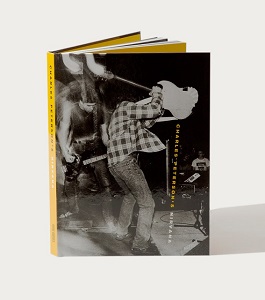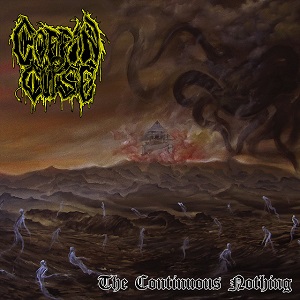Former LED ZEPPELIN Guitar Tech Reflects On Career
July 18, 2005, 18 years ago
Brattleboro Reformer (www.reformer.com) has issued the following report from Kevin Moran:
GRAFTON - Most people around town know Kent Armstrong as the fire department's captain, the forest fire warden or the vice president of the outing club.
But few know he once fixed JIMMY PAGE's guitar.
So impressed was the legendary LED ZEPPELIN guitarist, he called Armstrong's father and offered a cushy proposal to take Kent on the road as the band's guitar technician.
Using a bit more colorful language, Page told the father something to the effect of "Your son knows his stuff," according to Kent.
But, much to the young man's chagrin at the time, his father said no. Kent was enrolled in college and needed to keep studying his physics and mathematics. When Armstrong now looks back now, that decision may have been a blessing: It solidified the scholarship of a fruitful career -- not just a tour -- in the music industry.
So, in a nicely refurbished 1835 house, located on a long dirt road tucked away in the quiet hills of Grafton, Armstrong winds away his working hours in a small upstairs workshop. For the last three-plus decades, Armstrong, 52, found a niche all his own in the business: Constructing custom pickups for guitars and basses. And for years, guitar players and makers have considered Kent Armstrong Pickups the industry's best custom pickups.
But for most guitar players, the pickup -- an essential component -- remains a mystery, Armstrong said.
"They just plain don't understand it; they don't have an idea what it's about," he said. "No one has ever put out any book or article that really explains what a pickup is. And to them, it's as mystical as space science."Surrounded by large spools of copper wire, magnets, molds, metal jigs, tools, a vat of wax and a homemade wire winder, Armstrong has crafted his customized pickups for the world's top jazz and rock guitars such as C.F. Martin & Co., Azola Basses, and Benavente Guitars, and for customers like Led Zeppelin's Page and THE WHO's PETE TOWNSHEND.
For the rock 'n' roll guitar player or instrument aficionado, Armstrong's handmade pickups are true to form and preserve the guitar's pure tones.
"Before we came on the scene, you had to buy something off the shelf. It was generic," Armstrong said. "There was no customization. I'm actually offering people total -- 100 percent -- uniqueness."The music industry, after all, runs in his family. His father, the late Dan Armstrong, ran a music store in New York City in the 1960s. There, Kent got his start doing guitar repairs at the age of 15.
Kent's father is revered in the industry for creating the see-through electric guitar -- The Ampeg Dan Armstrong Plexi Electric Guitar. But as a studio musician, Dan Armstrong was also a silent hero in American music: He was a studio musician and played bass on LOU REED's Transformer album and recorded with THE BAND and CARLY SIMON, among others.
Around 1971, Dan Armstrong picked up from New York City, offering Dan the chance to stay stateside or go with him to live in England and get an all-expense paid education.
Kent chose the latter and he stayed for 28 years, and began to ply his pickup trade early on.
In England, he met his wife, Margaret, and the two moved to Grafton six years ago. They have a daughter, Kadie, who's now 28 and lives in Scotland, and a son, Aaron, 25, who remains in Great Britain making pickups -- just like his dad -- as part of the Europe-based enterprise of Kent Armstrong & Son Pickups.
Though he can make any kind of pickup, Armstrong developed his very own design: A wrap of copper wire impregnated in wax. Where most other pickups use a plastic bobbin to keep the wire coil together, without the extras, an Armstrong pickup is a fundamentally pure piece of electronics.
"By eliminating a lot of needless components, I'm able to construct customized pickups for a real low cost," he said.Just as important, the wax cuts stops "microphonic feedback" -- in other words, any extraneous noise that might get generated and interfere with the guitar sound.
"The most important thing is we're able to do something totally unique to pickups," Armstrong said. "Its construction is such that it's nothing that has ever been done before. Not to this day has anyone made a pickup this way."
Besides Armstrong, of course.
Wednesday, Armstrong explained his latest order from a major guitar manufacturer making its first foray into an electric acoustic guitar. The company called on Armstrong for his special design. It's a custom order for 150 pickups -- which is not a large job. He makes more than 2,000 a year.
Using one of many dozens of metal jigs, depending on the pickup style, Armstrong affixes a jig to his homemade winder. From there, he threads copper wire onto the jig, turns the winder on, and uses his fingers to carefully guide the wire -- nearly as slender as a human hair -- to form a tight coil that ends up to be nearly as thick as a finger.
For this particular piece, Armstrong made 5,200 winds of wire to make the coil.
From there, the coils get a bath in hot wax, are allowed to cool and then are married with magnets, a piece of steel and a couple wires. That assembly is then set into a customized epoxy form, left to sit overnight and -- voila! -- a pickup ready for mounting.
"This is a very low-tech system of manufacturing, but it puts out a high-quality product," he said.Of course, it's not as easy as just winding some copper. Remember, his dad kept him in college to study math and physics as opposed to letting him go on tour with Led Zeppelin. Now, Armstrong uses the various mathematical formulas he learned in college to achieve the correct number of copper winds for the coil, to offer just the right amount of resistivity, to compensate for the inherent stretch of the wire, to deal with the thermal dynamics of the epoxy molds ... you get the picture.
But at its core, Armstrong said, "The pickup is nothing more than a small electric generator."
After 35 years, Armstrong admits he finds the work boring at times. But then, something comes along that charges the batteries.
"I like the challenge of a brand new project," he said. "A new project is what gets me going."Armstrong doesn't keep tabs on who plays his equipment, though a conversation conjures up a notable name here and there every 10 minutes or so. The truth is, there's too many to keep track.
But if you're ever in the Hard Rock Café in New York City, for example, look for The Band's Robbie Robertson's guitar on display. Take a look at the pickups.
Those are Kent's.











